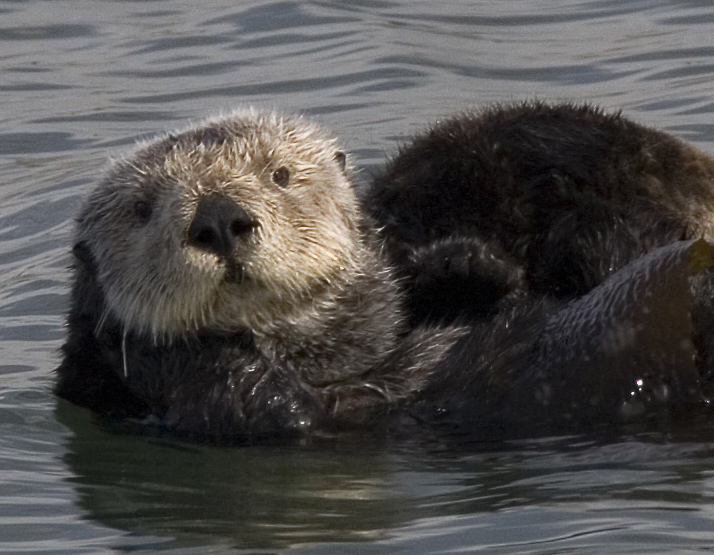We're open daily! View holiday hours
Science News
Sea Otter Awareness Week
September 23, 2013
by Molly Michelson

Welcome to Sea Otter Awareness Week! Started 11 years ago to increase the public’s awareness about sea otters, the event “is an annual recognition of the vital role that sea otters play in the nearshore ecosystem,” according to seaotterweek.org.
Tomorrow we will explore that vital role a little more; for today’s article, we checked in with Moe Flannery, from the Academy’s Ornithology and Mammalogy department, to better understand the health of local sea otters.
The US Geological Survey’s Western Ecological Research Center conducts annual population surveys of the southern sea otter (Enhydra lutris nereis), a federally listed threatened species found in California. Flannery says the southern sea otter’s range extends from Pigeon Point near Half Moon Bay down to Point Conception in Santa Barbara County.
This year’s USGS survey was released earlier this month and the news is cautiously optimistic: sea otter numbers are up, due largely to an increase in the number of pups.
In its 2013 report, the USGS estimates the population to be 2,941. For southern sea otters to be considered for removal from threatened species listing, the population estimate would have to exceed 3,090 for three consecutive years, according to the threshold established under the Southern Sea Otter Recovery Plan by the US Fish and Wildlife Service. The USGS has been conducting the population surveys since the 1980s.
“Population growth in central California has faltered recently, so the fact that we’re seeing a slightly positive trend is a basis for cautious optimism,” says Tim Tinker, a USGS biologist who supervises the annual survey. “Certainly, sea otters have made an impressive recovery in California since their rediscovery here in the 1930s.”
“We counted a record number of pups this year, which led to the uptick in the 3-year average,” says USGS biologist Brian Hatfield, coordinator of the annual survey. “A high pup count is always encouraging, although the number of adult otters counted along the mainland was almost identical to last year’s count, so we’ll have to wait and see if the positive trend continues.”
USGS scientists also annually update a database of sea otter strandings—the number of dead, sick or injured sea otters recovered along California’s coast each year. Flannery leads the Academy as one of the organizations that responds to these strandings as part of the national Marine Mammal Stranding Network.
This year’s stranding number was 368. Flannery says that a remarkable number of sea otters wash up with shark bites. “The shark populations have been increasing because elephant seal populations are increasing,” she says. “The sharks appear to take a bite of the sea otters, but don’t consume them. As bony, skinny and furry as sea otters are (with up to one million hairs per square inch!), they’re probably less desirable than fat, blubbery elephant seals.”
Sharks aren’t the only threat to sea otters. Mainland diseases, such as toxoplasmosis from cat fecal matter, also plague the animals.
Because of their threatened status, all sea otter necropsies (animal autopsies) are performed by the California Department of Fish and Wildlife. However, many of the specimens end up here, in the Academy’s collections. The result is that we have the largest collection of southern sea otter specimens in the world. The number was up to 1,300 specimens last year, but several hundred have yet to be cataloged and processed, according to Flannery.
Researchers come from all over the world to study the specimens—last year scientists from UC Davis came to study dental pathologies in 1200 sea otter skulls! They found that 93% of our southern sea otter specimens had problems with their teeth.
Luckily, most of us don’t have to study 1200 sea otter skulls to learn more about these engaging animals. For events around Sea Otter Awareness Week, including this week’s Nightlife at the Academy, click here. Celebrate!
Image: Mike Baird/Wikipedia